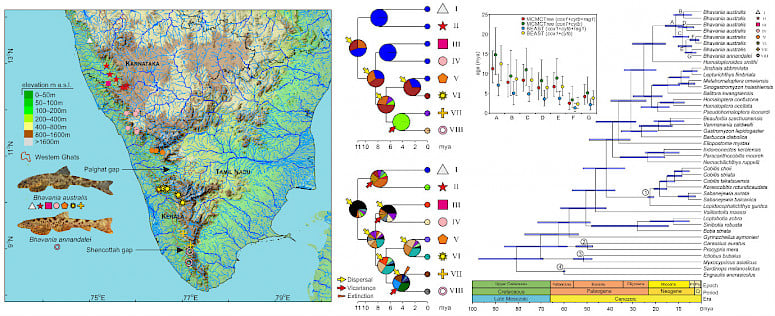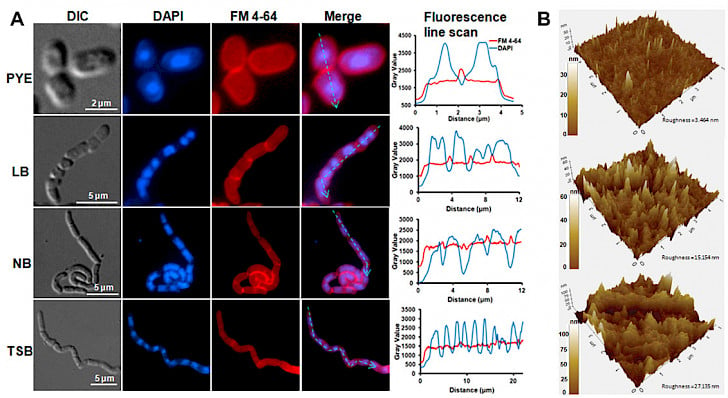Ecology and Evolutionary Biology
Ecology and evolutionary biology provide insights into how organisms interact with their environment and adapt to their surroundings over time. Studying the ecology and evolutionary adaptations not only enrich our basic understanding of various life processes but can also provide inspirations for novel biotechnological applications. The Ecology and Evolutionary Biology group at the Shiv Nadar Institution of Eminence covers a wide spectrum of ecological and evolutionary research including speciation, adaptations, phylogenetics, developmental biology, sensory ecology, ecosystem functioning, biodiversity and biogeography.
The biodiversity rich campus, with its lake and biodiversity park, provide natural ecological setups for teaching and research in ecology and evolutionary biology. In addition, facilities such as Hydra culture and transgenesis and insect rearing provide opportunities to controlled experiments. Advanced instrumentations and facilities, including high throughput Next Generation Sequencing chemistries and Proteomics, provide infrastructural support for answering complex questions at molecular level. In addition, state of the art computational facilities, including work stations, servers and software support, help in advanced computations and analysis.

Dr. Neelesh Dahanukar
Assistant Professor
Department of Life Sciences
[email protected]
Research focus
- Speciation on the drifting Indian subcontinent.
- Genomic basis of evolutionary adaptations.
- Multilevel selection of selfish genetic elements.

Dr. Richa Priyadarshini
Associate Professor
Department of Life Sciences
[email protected]
Research focus
- Cataloguing of bacterial biodiversity in Dadri Wetlands.
- Whole genome sequencing of Novel Bacteria.
- Harnessing biotechnological application of novel bacterial isolates.

Dr. Puli Chandramouli Reddy
Associate Professor
Department of Life Sciences
[email protected]
Research focus
- Evolutionary Developmental Biology.
- Evolutionary Genomics.
- Ecological Developmental Biology.

Dr. Tanvi Deora
Faculty Fellow
Department of Life Sciences
[email protected]
Research focus
- Comparative Biomechanics & Behavior.
- Sensory Ecology.
- Human impact on pollination.
Molecular ecology and evolution: adaptation, selection, and speciation
PI: Neelesh Dahanukar

Molecular phylogeny, molecular dating and historical biogeography of Western Ghats stone loach Bhavania spp.
Indian subcontinent has experienced a fascinating tectonic history in the last hundred million years when it left Gondwana and drifted towards Eurasia. This journey of the Indian subcontinent is marked with several geoclimatic activities that have influenced the diversity of endemic fauna and flora of this region. We specifically work on freshwater fishes as they have low dispersal abilities and provide fine scale information on how geoclimatic events might have influenced speciation on drifting Indian subcontinent. Our large scale molecular phylogenetic studies of freshwater fishes have revealed that the journey of Indian subcontinent was much more eventful than previously thought and requires proposing and testing multiple alternate hypothesis to understand the original of diversification of India freshwater fishes. Our work on reconstructing ancestral states in phylogenies have not only led to discoveries of multiple endemic taxa and adaptive radiations, but have also unveiled how tectonic activities, geological events, ancient river captures and paleoclimate have shaped biological evolution on the Indian subcontinent. Our explorations have also uncovered evolutionarily unique lineages that occupy extreme environmental conditions, for instance hill stream rapids and subterranean channels, which have led to several physiological and anatomical adaptations in these organisms. We study the genomic basis of these evolutionary adaptation by whole genome sequencing and genome wide selection analysis. In addition, we employ mathematical framework of multilevel selection and game theory to understand evolution of selfish genetic elements and its effect on genomic integrity.
Research focus:
- Speciation on the drifting Indian subcontinent: Reconstruction of biogeographical history of India using multigene phylogeny of freshwater fishes to understand how paleoclimate and tectonic activities contributed to various cladogenetic events and speciation.
- Genomic basis of evolutionary adaptations: Understanding the genomic basis of evolutionary adaptations to extreme environments and unique niches.
- Multilevel selection of selfish genetic elements: Understanding evolution of selfish genetic elements like transposons using evolutionary game theory.
Homepage: https://sites.google.com/snu.edu.in/molecoevo
Harnessing Microbial Biodiversity for Biotechnological Purposes
PI: Richa Priyadarshini

Studies on Deinococcus indicus DR1 and Exiguobacterium undae DR14. (A) FM4-64 and DAPI staining showed daughter cell attachment at division sites in Deinococcus indicus DR1. (B) Atomic force microscopic images showing degradation of Polystyrene by Exiguobacterium undae DR14.
Wetlands, defined as land areas that are saturated with water – either permanently or seasonally – are rich ecosystems supporting a wide array of flora and fauna. The rich biodiversity of wetlands has attracted attention due to the high number of species present in the small geographical area. Bacterial diversity in wetland ecosystems is estimated to be an amalgamation between aquatic and terrestrial habitats. Metagenomics and synthetic biology advancements have paved the way for utilizing microbial diversity for tailored applications. Harnessing microbial biodiversity supports sustainable development by reducing environmental impact and promoting circular bioeconomy principles. One of the primary goals of our research is to isolate and characterize microbes with biotechnological potential from wetlands. We studied the cultivable bacterial communities residing in the wetland of Dadri, Uttar Pradesh, India. Our laboratory has isolated more than 100 bacterial species from the wetland soil and water samples. After primary characterization, bacteria showing unique characteristics were studied in detail. We focused on the following bacterial species- Deinococcus indicus strain DR1, Exiguobacterium sibiricum strain DR11, Exiguobacterium undae strain DR14. Exiguobacterium strains DR11 and DR14 can potentially degrade plastic, especially polystyrene. Exiguobacterium species are known to be extremophiles and can utilize polystyrene as a carbon source. Deinococcus indicus strain DR1 is a red-pigmented, arsenic-resistant bacterium.
Funding: DBT, Earthwatch India
Research focus:
- Cataloguing of bacterial biodiversity in Dadri Wetlands
- Whole genome sequencing of Novel Bacteria
- Harnessing biotechnological application of novel bacterial isolates
Homepage: https://snu.edu.in/faculty/richa-priyadarshini/
EcoEvoDevo: Ecological Evolutionary Developmental Biology
PI: Puli Chandramouli Reddy

Evolution and expression of Hox-like genes in Cnidaria
The origins of multicellular animals and the key evolutionary transitions that gave rise to their incredible diversity fascinate me. I am particularly interested in the molecular innovations that enabled cells to stay together after cell divisions, differentiate into specialized types (such as neurons and muscle cells), form distinct germ layers, establish diverse body plans, and develop precise body axes and sizes. To explore these fundamental processes, I use Hydra, an early eumetazoan, as a model system.
Research focus:
- Evolutionary Developmental Biology: Investigating how developmental signaling pathways evolved to regulate chromatin dynamics in the process of axis patterning, and the emergence of novel cell types in Hydra.
- Evolutionary Genomics: Using comparative genomics to identify key genomic transitions that contributed to lineage-specific innovations.
- Ecological Developmental Biology: Exploring the roles of microbial and abiotic environment in epigenetic regulation and developmental processes in Hydra.
Homepage: https://sites.google.com/snu.edu.in/coee/groups
Sensory Ecology of Insect Pollination
PI: Tanvi Deora
We study the biomechanics and sensorimotor mechanisms of insect behaviors. Insects are the major pollinators of flowering plants. How insects find and feed from flowers has a profound influence on their ability to pollinate plants. Insects use various sensory modalities such as olfaction, vision, touch, humidity etc to locate their host flower and find the tiny nectary to feed from them. Some like the nocturnal hawkmoths hover while feeding, and perform these functions even at dawn and dusk when light levels are limited. Feedback from several sensory modalities help control and coordinate body and appendage motion. In the lab, we ask how biomechanics and neural dynamics have shaped such ecological interactions. We combine behavioral, neuroanatomical, biomechanical and electrophysiological techniques to investigate how these insects use their sensors to perform rapid and precise tasks. Using comparative approaches, we study how evolutionary history and ecology have shaped neural systems and body mechanics. In addition to bringing these behaviors to the lab, we also study the impact of sensory ecology and learning in insects on the pollination efficiency in the field.

Studies exploring impact of environmental factors such as light pollution on campus and Surajpur wetlands. (A) Light trap to attract nocturnal pollinators. (B) Small branded swift visiting a pinwheel flower (Tabernaemontana plant) in the Botanical Garden on campus. (C) Pollen found on a common tiger butterfly in Surajpur bird sanctuary.
Research focus:
- Comparative Biomechanics & Behavior: Using engineering approaches, we study the biomechanical and behavioral basis of insect pollination interactions
- Sensory Ecology: We study the role of sensing and learning in insect pollination.
- Human impact on pollination: We survey and quantify the diurnal and nocturnal lepidopteran pollination networks across varied environments to understand the impact of anthropogenic pollutants on pollination.
Homepage: https://sites.google.com/view/tanvideora/home